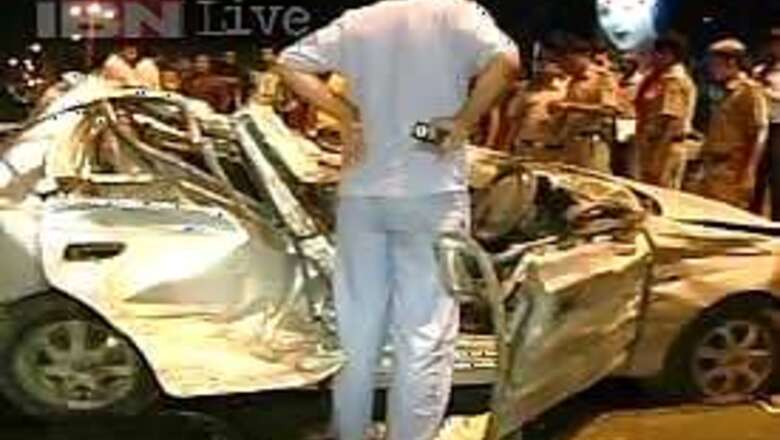
views
New Delhi: Delhi tops the list among cities in the country in terms of fatal road accidents with five people - four of whom are pedestrians and two-wheeler riders -- losing their lives every day, a report by Centre for Science and Environment (CSE) revealed on Monday.
The report pointed out that road accidents in the national capital had so far claimed 325 lives during the night and 332 lives in the day time from January 1 to May 31 this year.
Quoting Union Ministry of Road Transport and Highways' report - Road Accidents in India 2012, CSE said that about five road accident deaths occur every day, which includes two pedestrians and two two-wheeler riders. It also said every week, two cyclists and one car rider dies in the city.
As per the report released by CSE on Monday, violation of rules is rampant in Delhi - with 329,000 cases of signal jumps, over 14,000 cases of drunken driving and 45,158 cases of over speeding being reported across different parts of the national Capital. Chennai, which follows Delhi in road accident deaths, reports 25 per cent less fatalities.
"16 deaths and 58 road injures are reported in India in every hour with sharing of fatal accidents in the total being up from 18 per cent in 2003 to 25 in 2012," the report also pointed out.
The report noted that in Delhi, the share of pedestrians falling victims to road crashes is as high as 44 per cent - the highest among key metro cities. As much as 50 per cent of accidents occur at night, and 33 per cent between 6 PM and 12 AM, in the city.
"If any other cause was responsible for so many deaths in Indian cities, it would have led to emergency measures. Neither the rich and powerful nor the poor can escape the fury of our killer roads," CSE's executive director Anumita Roy Chowdhury said.
She also said that report also suggested that most accidents occur near flyovers, crossing and signal-free and high speed corridors.
Of the total accident prone hot spots identified near flyovers, about 27 per cent are on the Ring Road, 17 per cent on GTK Road, 13 on Outer Ring Road and 6 per cent on Mathura Road, she said.
"It is important to note that the eight key arterial roads that record nearly 75 per cent of all deaths, have been designed as high speed corridors, which received the maximum attention and resources from the government - including widening for six-eight lanes, flyovers to allow seamless travel for vehicles, subway crossings and foot over bridges to prevent people from crossing on the surface and obstructing traffic flow, and closing of medians to allow vehicles to move uninterrupted. These features have turned these arterial roads into death traps," the report stated.
Sunita Narain, director general, CSE - who herself has recently recovered from a serious cycling accident - said, "Unsafe roads are a warning against the goals of sustainable mobility practices. Walk, cycle, and public transport will not work if people are not safe, and are injured or die while traveling."
The CSE report revealed another glaring revelation that most accidents occur near bus and Metro stations while saying that it is very disturbing that the access paths to public transport nodes including bus depots, bus stations, bus terminals and Metro stations show high incidence of accidents.
Some of the notorious stretches are near ISBT gate, Anand Vihar ISBT, Pashchim Vihar Metro Station, Uttam Nagar Metro Station and Jahangirpuri bus stand. Ten bus stops are listed as accident spots which account for 8 per cent of the total accidents, and include the Kashmere Gate and Wazirpur stops.
"Among the Metro stations, those at Mansarovar Park, Uttam Nagar and Madipur are the major accident spots. This is a serious matter in view of the fact that lack of safety in accessing public transport can compromise public transport usage," the report also said.
The report further pointed out that about 24 per cent of the total accidents happen at crossings and junctions and accidents are happening on roads without properly designed junctions, or where provisions for crossings were missing.
A CSE re-analysis of all accident spots and proximity showed that crossing and junction-related problems could be contributing to 30 per cent of the total accidents and some key hot spots are Burari Chowk, Seelampur T-point and Ashram Chowk which recorded 25, 25 and 22 accidents, respectively.
Based on the accident hot spot data, CSE has carried out a safety audit by selecting stretches from six arterial roads that are the most dangerous for pedestrians and cyclists.
CSE's report also said that accessibility to public transport modes is poor in almost all the corridors with bus shelters being located on footpaths as there is no clear multi-function zone.




















Comments
0 comment